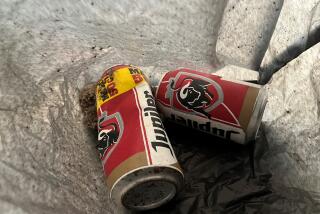Key Clues in Boston Art Theft Are Fakes
- Share via
BOSTON — The hunt for masterpieces stolen from the Isabella Stuart Gardner Museum is apparently back at square one after federal officials disclosed that chips said to be taken from two of the paintings are fakes.
The FBI and experts from the Gardner also dismissed as phony photographs purporting to depict two of the works that have been missing since a pair of thieves disguised as police officers broke into the Italian villa-style museum in a daring late-night heist seven years ago.
The 12 works stolen from the museum are valued at $300 million, the largest art robbery in history.
The announcement late Thursday that the paint chips, offered as part of an elaborate scheme to win freedom for a pair of convicted art thieves, are fakes shattered hopes of recovering the missing paintings, including two canvases by Rembrandt and one by Vermeer.
“We have conclusively determined that the paint chips were not authentic,” Gardner museum officials announced.
The U.S. attorney here, Donald K. Stern, added that photographs billed as proof that the two missing Rembrandts were retrievable were “photographs of photographs, or of a print.” Both the photographs and the paint chips “are not what they purport to be,” Stern said.
The flecks of paint were said to have come from Rembrandt’s “Storm on the Sea of Galilee” and “A Lady and Gentleman in Black.” The Boston Herald turned them over for examination by experts in October. The tabloid newspaper said it obtained the paint samples from agents acting on behalf of William Youngworth III and Myles J. Connor II, veteran art thieves whose names popped up on the government’s list of suspects soon after the break-in at the Gardner.
Youngworth and Connor were in prison at the time of the theft. But both implied that they could help locate the stolen paintings. In exchange, they demanded lightened sentences, immunity from prosecution on any charges stemming from the Gardner theft and $5 million in reward money.
A Boston Herald reporter, Tom Mashberg, also became involved in the drama when he wrote in August that he had been taken on a late-night visit to a darkened warehouse “somewhere in the Northeast.” There, Mashberg related, a canvas was unfurled to him that bore a strong resemblance to “Sea of Galilee,” Rembrandt’s only seascape.
*
For a time, federal agents and museum officials attempted to negotiate with Youngworth, who was not in prison when reports of the paint chips and purported photographs surfaced. Youngworth has since been convicted of receiving a stolen van and is serving a two- to three-year sentence. Connor is serving a 10-year sentence for cocaine possession.
While the Herald hired its own expert, Walter C. McCrone of Chicago, who said the paint chips were almost certainly from a Rembrandt, the Gardner’s chief conservator, Barbara Mangum, concluded otherwise. Tests revealed the paint chips to be “significantly different” from authentic chips from the Rembrandts, the museum found.
Federal investigators and Gardner officials refused further comment. But the Herald responded with a headline that filled almost the entire front page of its Friday edition. It read: “Chips are down.”
More to Read
The biggest entertainment stories
Get our big stories about Hollywood, film, television, music, arts, culture and more right in your inbox as soon as they publish.
You may occasionally receive promotional content from the Los Angeles Times.










